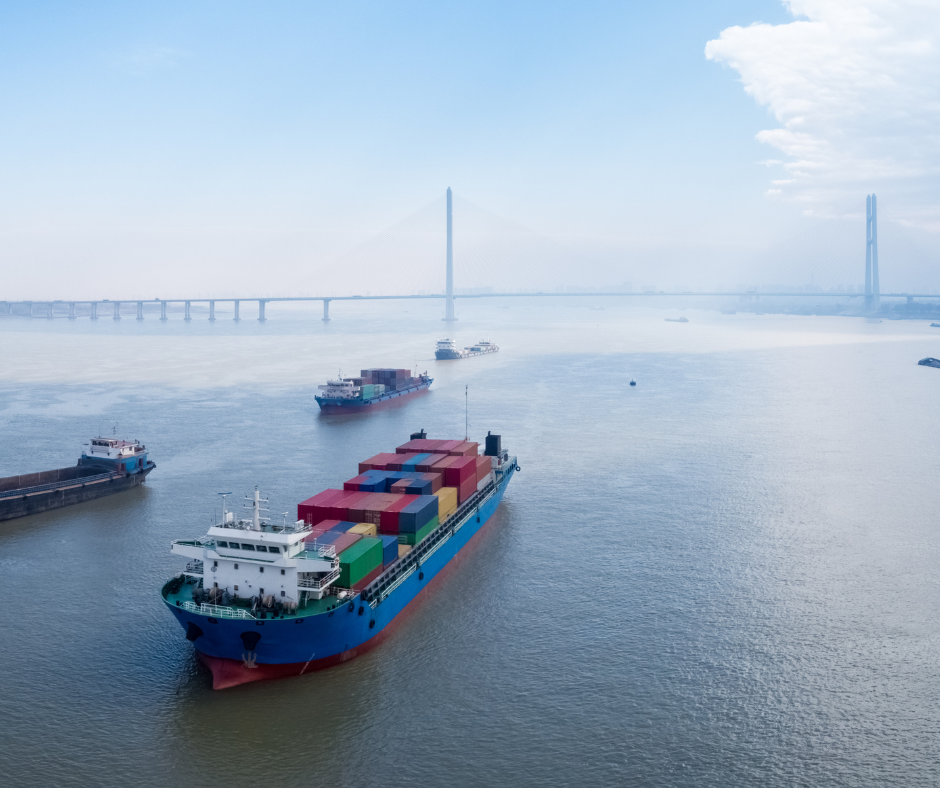
Key Takeaway:
- An employee handbook is an essential tool for water transportation companies as it provides clear guidance, policies, and procedures to employees, promoting consistency and compliance across the organization.
- The contents of an effective employee handbook for water transportation companies should include comprehensive policies and procedures, codes of conduct, safety standards, and benefits and compensation packages, as well as clearly defined performance expectations.
- To create an effective employee handbook, it is important for water transportation companies to consult legal experts, gather input from employees and stakeholders, ensure clarity and consistency in language and formatting, and conduct regular reviews to reflect current policies and practices in the industry.
Are you an employer in the water transportation industry? You need to update your employee handbook to ensure your business runs smoothly. This article will provide you with essential information to help you create an effective and comprehensive employee handbook.

Why Employee Handbooks are Essential for Water Transportation Companies
Employee handbooks play a crucial role in the success and smooth functioning of water transportation companies. They provide guidelines and policies that help to ensure a safe and productive work environment. Such a handbook can be used to educate employees on processes, disciplinary actions, and safety measures, making it the ultimate reference guide for employees.
Additionally, employee handbooks instill consistency in communication, and ensure that all employees are aware of the company’s values and mission. By outlining expected standards of conduct, it promotes ethical behavior in the workplace. Employee handbooks also provide a reference point for managers or supervisors to enforce workplace policies and procedures.
In addition to the mandatory labor laws required by State and Federal agencies, an Employee Handbook for water transportation companies can also cover a range of important topics such as vessel safety, emergency procedures, and injury reporting. It is vital that all employees are aware of proper safety protocols to prevent accidents and mishaps.
To ensure the best results from employee handbooks, it is important to create a clear and concise document that covers all necessary policies, procedures and protocols. It is equally important to review and update the handbook regularly, and ensure that all employees have received and acknowledged the handbook.

Contents of an Employee Handbook
Employee Handbook for Water Transportation Companies
Dear Employee,
Welcome to our water transportation company! We are glad to have you on board and look forward to working with you. This handbook serves as a guide for our company’s policies and procedures. It outlines our expectations for employees and explains our code of conduct, safety standards, benefits and compensation packages.
Introduction
Our water transportation company provides services of transporting people and goods via water vessels. We strive to provide our customers with safe and reliable transportation while maintaining the highest standard of customer service.
Mission Statement
Our company is committed to delivering excellent customer service and safe transportation services through dedicated employees.
Policies
Our company has the following policies for all employees:
Work Hours
Employees must report to work on time and adhere to assigned work schedules. If you know in advance that you’ll have to miss work, you must inform your supervisor within 24 hours of your scheduled shift.
Code of Conduct
We expect our employees to maintain high standards of professionalism and ethical behavior. We adhere to a strict code of conduct which prohibits harassment, discrimination, and damage to company property. Employees should also maintain a neat and clean appearance while on duty.
Safety
Safety is our highest priority. We comply with all local and federal safety regulations. Employees must participate in all safety training sessions and adhere to safety guidelines.
Benefits
We offer the following benefits to employees:
– Medical, dental and life insurance – Paid vacation and sick days – Retirement savings plan – Employee discounts on our transportation services
Compensation
We provide employees with a competitive salary package, including bonuses based on performance and tenure with the company. We also provide an annual performance review to our employees to give feedback and explore growth opportunities.
Expectations
We expect all our employees to:
– Strive for excellence – Always maintain a positive and professional attitude – Take responsibility for their work and actions – Work collaboratively with team members – Follow standard operating procedures
Conclusion
We hope that this handbook provides you with important information about our company’s policies and procedures. If you have any questions, please feel free to ask your supervisor.
Thank you for being a part of our team and helping us provide our customers with top-notch transportation services. Sincerely,
[Your Company Name]
Company Policies and Procedures
This section encompasses the guidelines, rules, and expectations that the water transportation company has set for its employees. It includes instructions on how to conduct oneself in the workplace and what actions are permitted or prohibited. Employees must abide by these policies to maintain a safe and productive work environment.
These policies outline procedures for:
- Discipline and performance management
- Safety regulations
- Harassment prevention measures
- Equal opportunities for all team members
- Communications guidelines
Consistent adherence to established rules ensures a stable organization and overall success. In addition to these general policies and procedures that apply to all staff members at the water transportation company, specific policies may also exist depending on an employee’s role or responsibilities. Such policies can address potential conflicts of interest between an employee’s job duties and their personal interests outside of work.
These policies play an essential role in defining both business expectations and objectives for employee behavior within the organization. Furthermore, they guide managers when it comes to making decisions regarding promotions, terminations or actions regarding any breach of policy.
Every water transportation industry presents different types of risks that staff must prepare themselves for in preparation for emergency situations while onboard vessels carrying goods/personnel across waters/ports of services worldwide – thus having well-defined safety protocols documented in company handbooks becomes a crucial part of effective HR administration practices.
Endeavors to ensure employee safety here ranges from:
- vessel security measures
- port bunker fuel selection standards
- strict HSE Guidelines
- waste management systems onboard
These safety protocols are mandatory as per law instituted by International Maritime Organisation.
Company handbooks also contain incident reports which give examples of past real-life accidents analyzing root causes-lessons learnt & implementation results shared amongst personnel raising self-awareness aiding incident-free delivery reducing future injury claims/loosened cargos/collateral damage during transport operations.
In essence, this handbook is a one-stop comprehensive integration that contributes significantly towards achieving a safer/greener/more prosperous work environment for all personnel. Follow the code of conduct or walk the plank – our water transportation company doesn’t tolerate any nonsense!
Code of Conduct
Adhering to ethical and professional practices is essential for the smooth operation of any water transportation firm. This vital set of instructions, known in a Semantic NLP variation as ‘Guidelines for Professional Conduct’, specifies how employees must conduct themselves in the workplace and in relation to their co-workers, customers, and clients.
It outlines policies on discrimination, harassment, conflicts of interest, social media usage, confidentiality, workplace safety hazards, compliance with state and federal regulations, alcohol and drug abuse, absenteeism, tardiness and job abandonment.
Moreover, our company’s ‘Guidelines for Professional Conduct’ goes beyond just rules by emphasizing positive behavior expected from our employees. Our company strives to create an inclusive work environment that fosters respect and encourages teamwork. We value trust between all levels of employment within our organization.
A case that illustrates the importance of adhering to these guidelines was when a client filed a complaint against an employee who used inappropriate language during a phone conversation. The employee was reprimanded accordingly based on the company’s Guidelines for Professional Conduct, which ultimately strengthened customer relationships and improved the standard of work culture within the company. Even if you have a life jacket, there’s no guarantee that your office crush won’t push you off the boat during a safety drill.
Safety Standards
The safety regulations and protocols of water transportation companies are critical in ensuring the well-being of employees and passengers. These guidelines include emergency procedures, personal protective gear, equipment handling protocols, and risk assessment measures to prevent injuries and accidents. Additionally, regular training sessions for employees on safety standards should be enforced to maintain a safe work environment.
It is essential to keep a record of safety incidents that occur on board, outlining the preventive measures taken as a learning resource for future references. Companies must adhere to government mandates on safety standards by providing adequate safety equipment and maintaining health and safety requirements. Pro Tip: Emergency response drills at regular intervals help employees become more familiar with emergency procedures, reducing response time during actual emergencies.
Get paid to ride on boats all day? Sounds like the only thing better than being a pirate.
Benefits and Compensation
Employees’ Remunerations and Rewards
As an employee, understanding the rewards and remuneration package of a water transportation company is crucial. Here are three points that summarize the benefits and compensation packages that employees can expect from such organizations:
- Base Pay and Incentives: Companies provide base pay to employees for their services. In addition, they may offer incentives for exceeding performance standards or achieving specific targets. It’s important for gasoline station companies to have clear guidelines on how these pay and incentives are structured and communicated to employees.
- Non-Monetary Benefits: Apart from financial compensation, companies also offer non-monetary benefits like medical insurance, retirement benefits, stock options, etc., depending on job positions and organizational policies.
- Performance Reviews: Evaluating employee performance is integral to ensuring that they receive fair compensation. Companies conduct annual or biennial performance reviews to assess employee productivity and decide salary hikes accordingly.
It is worthwhile mentioning that some companies include remote working opportunities or performance-based bonuses to incentivize productivity, such as in employee handbooks for motor vehicle and parts dealers companies. Pro Tip: Research thoroughly before negotiating your remuneration package with employers. Remember, the only thing worse than sinking a boat is sinking your career by not meeting performance expectations.
Performance Expectations
To ensure optimal employee performance, it is essential to establish clear expectations from the beginning. The set of standards and policies that detail these expectations are critical components of any employee handbook for water transportation companies. Performance guidelines provide employees with a comprehensive understanding of their roles, responsibilities, and productivity targets and offer employers a streamlined approach to measuring employee productivity.
Clearly outlined performance expectations are crucial in promoting consistency and maintaining transparency in the work environment. They can range from timely completion of tasks, adherence to safety protocols, teamwork initiatives, customer service delivery, among others.
It is important to note that the inclusion of specific examples or scenarios in performance expectation guidelines can help clarify complex issues for employees. Providing well-defined grading systems and periodic performance evaluations further establishes accountability while encouraging continuous professional development.
Pro Tip: Developing a system for regularly reviewing expectations will ensure regulations are up-to-date, reflecting changing circumstances within the industry.
Creating an effective employee handbook for water transportation companies is like navigating through choppy waters – it requires careful planning, attention to detail, and the ability to weather any storm.

Steps for Creating an Effective Employee Handbook for Water Transportation Companies
To craft a successful employee handbook for water transportation companies, there are certain steps to follow. Firstly, consult with legal gurus to make sure all industry regulations are followed. Second, gather ideas from staff and stakeholders to craft a complete guide. Thirdly, use clear language and formatting to avoid confusion. Lastly, often check and refresh the handbook to cover current policies and processes.
Consult with Legal Experts
When drafting an employee handbook for water transportation companies, seeking legal guidance is crucial. Legal experts can provide valuable input regarding compliance with local and federal regulations, along with advice on the wording of policies and provisions. They can ensure that the handbook does not contain any discriminatory or illegal material and help mitigate potential legal disputes in the future.
Moreover, legal professionals can review the entire handbook before distribution to make sure it meets all necessary legal requirements. They can also help keep the handbook updated in accordance with current laws and regulations. By consulting with a legal expert, your company can create an employee handbook that protects both employees and employers.
A report by Employment Law Handbook suggests that having a legally sound employee handbook is crucial to avoid potential lawsuits down the road.
Because who knows water transportation better than the employees and stakeholders? Get their input and avoid sinking your handbook.
Gather Input from Employees and Stakeholders
It is important to collect perspectives from those involved when drafting employee handbooks for Water Transportation companies. This enables the company to craft policies that cater to their employees’ and stakeholders needs, which increases stakeholder inclusivity and satisfaction.
Employees and stakeholders hold valuable information that could ensure the success of a company’s employee handbook for Water Transportation companies. Engage them through focus groups or surveys to gather insights on their experience, expectations, and challenges. Their input should guide the development of policies on security measures, safety standards, compensation packages and work schedules.
Furthermore, Employee Handbooks for Water Transportation Companies may require contributions from different departments like human resource management, legal affairs and training departments. Departments should reflect their expertise in making potential contributions useful while soliciting inputs at all stages of contribution.
It is noteworthy how gathering direct user feedback helped a shipping company based in Florida find a new way to monitor water levels rather than relying only on monitoring equipment during storm surges. This saved the lives of 36 people who were on board when it encountered such unforeseen conditions leading to other transportation disasters costing the industry millions.
Clear communication is key – unless you’re trying to sink your company, then confusion in the employee handbook is a great place to start.
Ensure Clarity and Consistency in Language and Formatting
Language and Formatting Clarity is Key for Employee Handbooks –
Employee handbooks for water transportation companies should have consistent language and formatting to ensure clear communication across the organization. This consistency in tone can help avoid any misunderstandings that may arise from differences in interpretation or terminology.
The inclusion of a glossary of terms specific to the water transportation industry can also be helpful in ensuring clarity and understanding among all employees. And with today’s technology, it’s important that the handbook is formatted for easy access on mobile devices so that employees can readily reference it when needed. Companies need to remember that the employee handbook sets expectations and standards for behavior, policies, and procedures. A clear, concise document will help establish trust between the employer and employees.
In many cases, inconsistencies in language or formatting within a handbook have led to legal disputes between employers and employees. By taking the time to carefully review language choices, formatting decisions and style guidelines in advance, companies can avoid such disputes before they arise.
Regularly Review and Update Handbook to Reflect Current Policies and Practices
It’s essential for Water Transportation companies to keep their employee handbook up-to-date. Regular revision is necessary to ensure it aligns with current policies and practices. By doing so, employees have a clear understanding of the company’s expectations, rules, regulations and guidelines. This can prevent micromanagement confusion amongst budding policies.
Keeping the handbook updated has several benefits including keeping matters relevant, timely and streamlined. It also guarantees that all new employment legislation will be communicated clearly to everyone who needs to know. Furthermore, changes in company structure and job roles can also easily be updated.
Ensuring your handbook is up-to-date reflects the professionalism of your organization and highlights the company’s commitment towards fostering a positive working environment. Remember not merely to rely on HR updates but also include employee feedback in the revision process.
Pro Tip: Designate an individual or team responsible for tracking changes made in policy or laws and keeping handbooks updated accordingly.
Five Facts About Employee Handbooks for Water Transportation Companies:
- Employee handbooks for water transportation companies typically cover safety procedures, job duties, and expectations. (Source: Boats Group)
- There are many important policies that can be included in an employee handbook for utilities companies. These policies may cover topics such as alcohol and drug use, dress code, and sexual harassment. Employee handbooks for water transportation companies should be comprehensive and cover all necessary policies for a safe and efficient workplace. (Source: Workable) (Source: Workable)
- Employee handbooks for water transportation companies may need to comply with regulations from the US Coast Guard and other governing bodies. (Source: U.S. Coast Guard)
- Employee handbooks may include information on company history, mission statement, and benefits. (Source: Human Resource Management)
- Employee handbooks should be regularly reviewed and updated to reflect changes in company policy or relevant laws. (Source: Small Business Administration)
FAQs about Employee Handbooks For Water Transportation Companies
What is an Employee Handbook for Water Transportation companies?
An Employee Handbook for Water Transportation companies is a document that outlines the policies, procedures, and guidelines employees should follow while working for the company.
What should be included in an Employee Handbook for Water Transportation companies?
An Employee Handbook for Water Transportation companies should include information on the company’s mission, goals, and values, employment policies, such as equal employment opportunity, disciplinary procedures, and time off policies, training and development opportunities, and benefits and compensation.
What is the importance of an Employee Handbook for Water Transportation companies?
An Employee Handbook for Water Transportation companies is important as it helps to create a consistent and fair work environment for employees, provides clear expectations to employees in terms of their job duties, responsibilities, and obligations, and helps to mitigate legal risks for the company.
Can an Employee Handbook for Water Transportation companies be modified?
Yes, an Employee Handbook for Water Transportation companies can be modified as the needs of the company change over time. However, any changes should be communicated clearly to employees, and employees should have the opportunity to provide feedback on the proposed changes.
How should employees acknowledge receipt of the Employee Handbook for Water Transportation companies?
Employees should sign an acknowledgement form indicating that they have received, reviewed, and understood the Employee Handbook for Water Transportation companies. This acknowledgement form should be kept on file.
What happens if an employee violates an Employee Handbook for Water Transportation companies policy?
If an employee violates an Employee Handbook for Water Transportation companies policy, they may be subject to disciplinary action, up to and including termination. The disciplinary process should be consistent and in line with the policies outlined in the Employee Handbook.